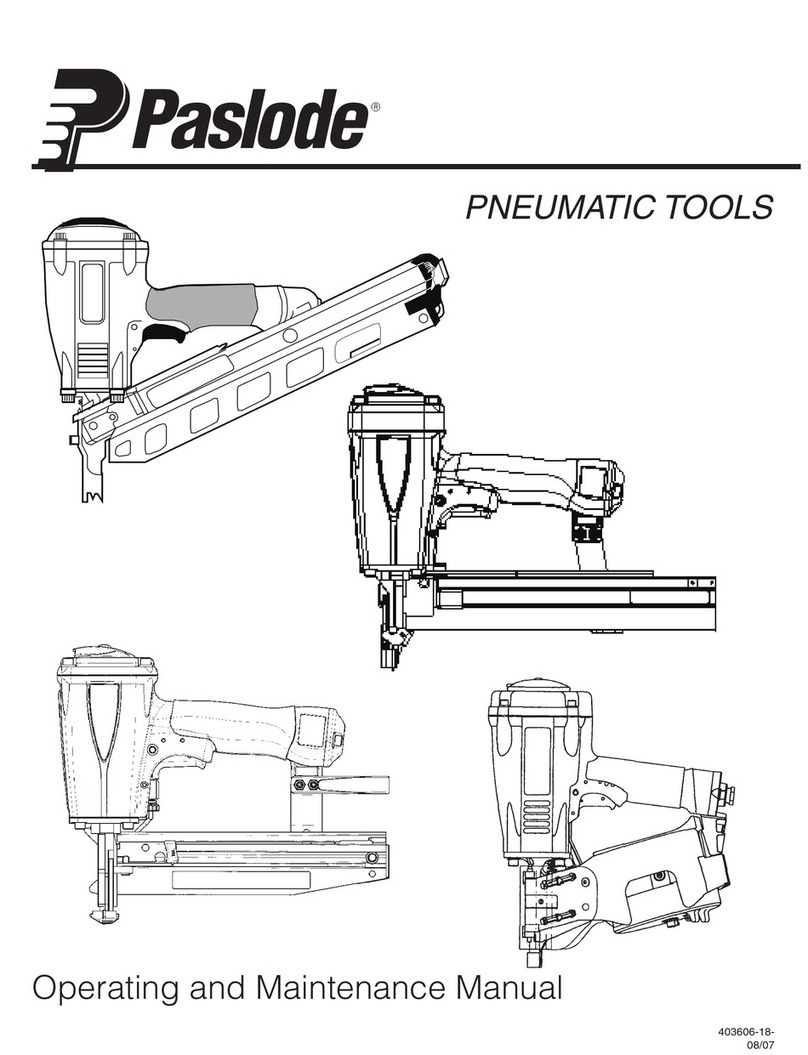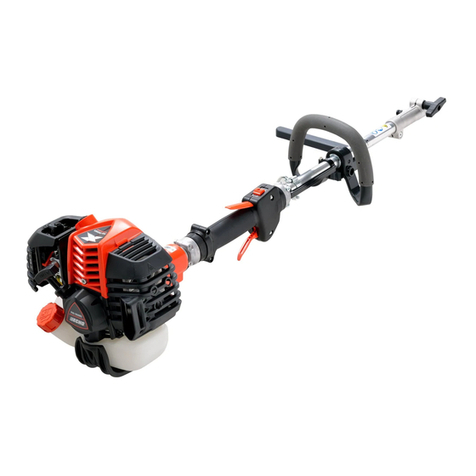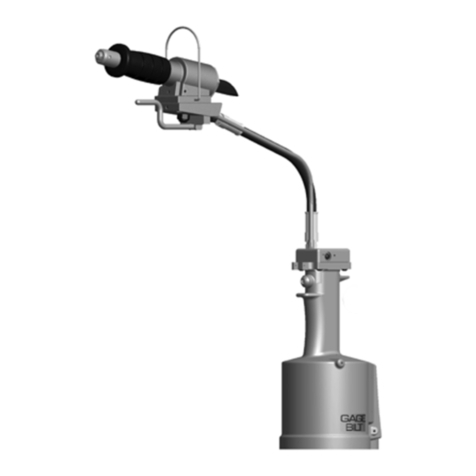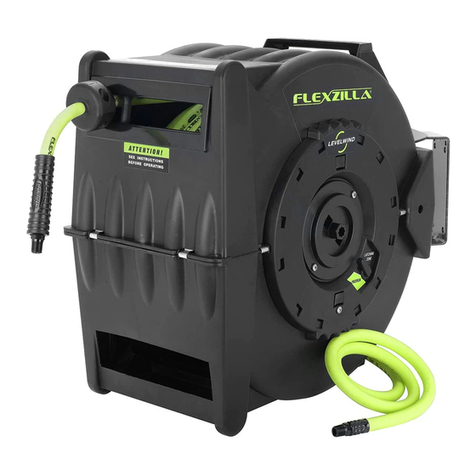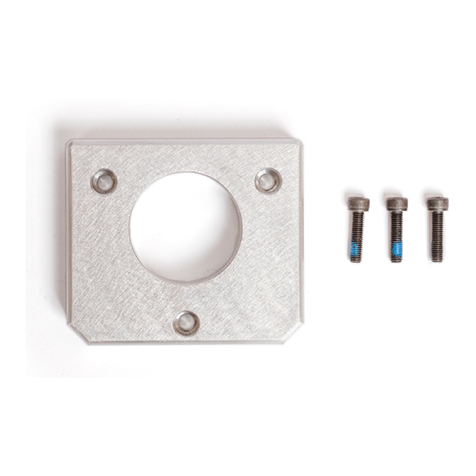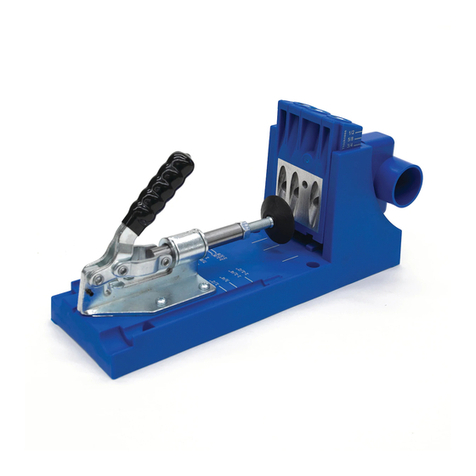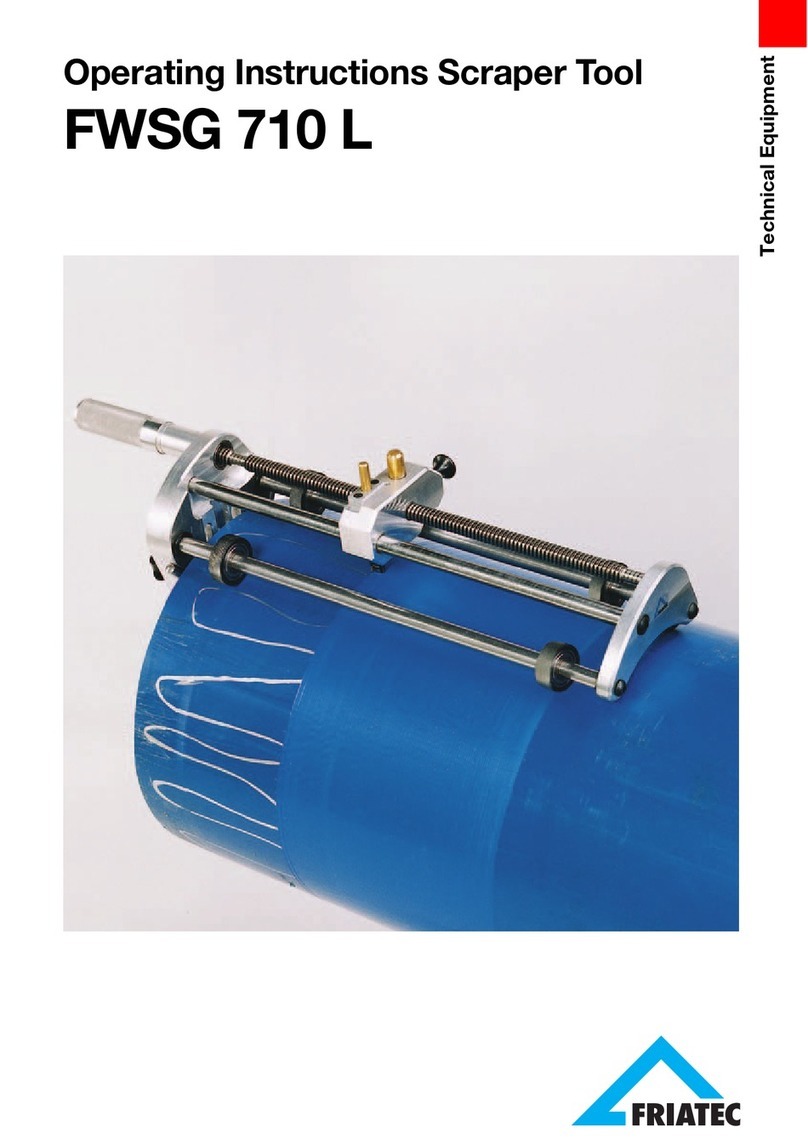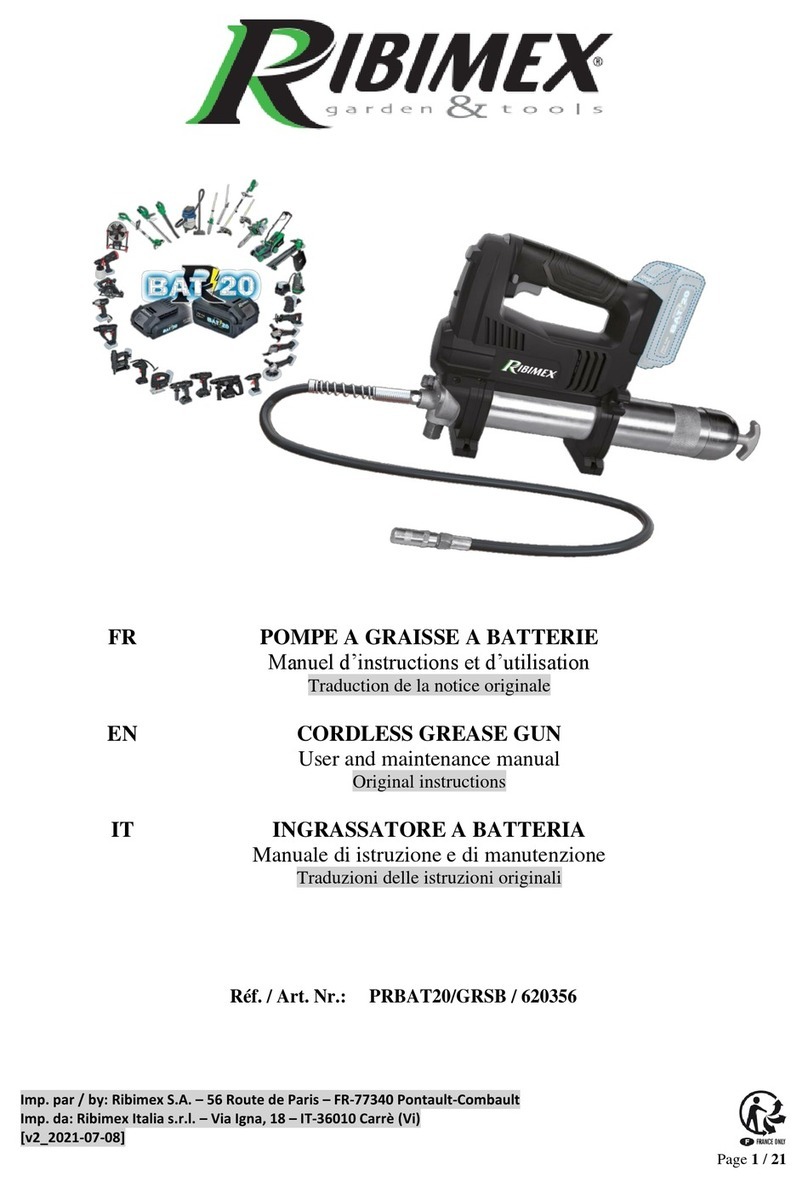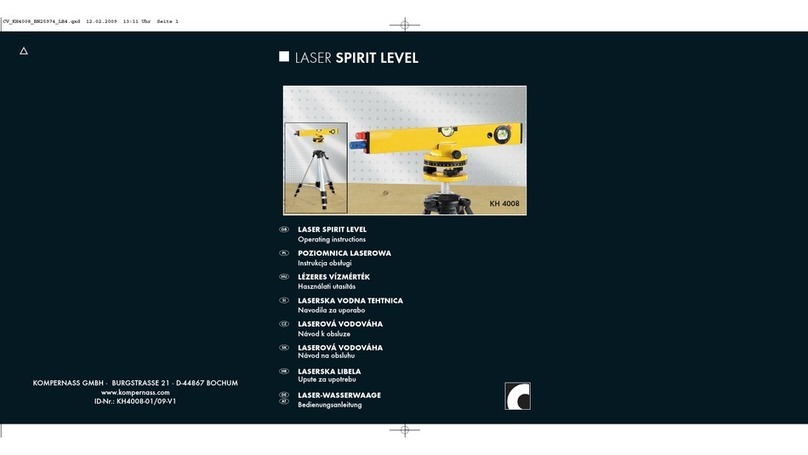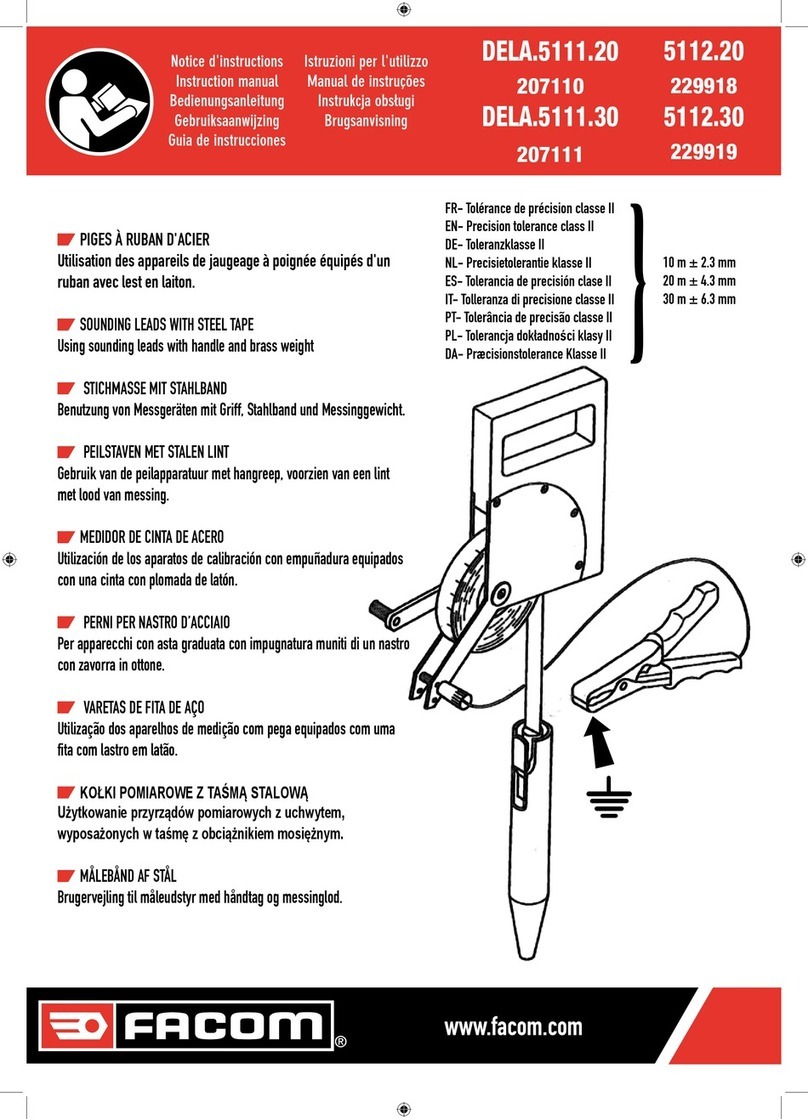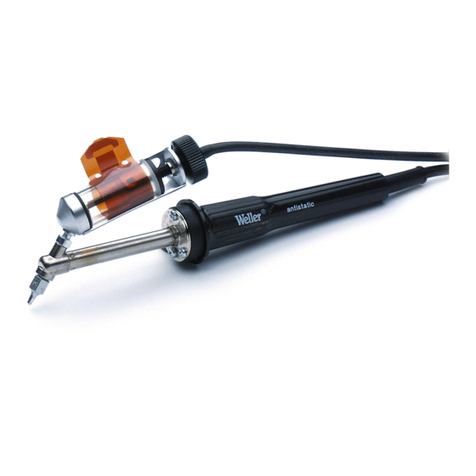Nibco PC-280 User manual

Serialnummer
Hydraulic
Pressure
Check
Se
ri
al
nu
mm
er
H
y
draulic
P
re
ss
u
re
C
he
c
k
PC-280
NIBCO INC. – World Headquarters
1516 Middlebury Street
Elkhart, IN 46516
USA
Hydraulic
Pressure
Check
Serialnummer
HE.13575_A © 06/2010 TE-2
US Instruction Manual
Battery-powered
Pressing Tool

I
Bedienungsanleitung/ Instruction Manual
5
3 BL1830 (RAL2)
optional:
NG2230
1
89 10
6
2
7
4
HE.15333
HE.13575_A © 06/2010
PC-280
I
Bedienungsanleitung/ Instruction Manual
3 PC-7L
optional:
PC-9L
5
1
6
2
4
3
P
C
-7
L
optional
:
P
C
-
9L
5
1
89 10
6
2
7
pic. 1 (see Tab. 3)
4
HE.15333
(Components identified on page 1)
US

II
Bedienungsanleitung/ Instruction Manual
1 2 3 4
5
5304711 batch# e.g. 304711
CV datecode e.g. C = 2009; V = July
142 consecutive# e.g. „142“ = tool # 142
(BL1830) 22 min.
RAL2
10 - 40°C
CLICK
Li-ion
®
#884676B996
#884598C990
1. 2.
HE.13575_A © 06/2010
PC-280
II
Bedienungsanleitung/ Instruction Manual
PC-7L 22 min.
50 - 104°F
CLICK
1 2 3 4
5
5304711 batch# e.g. 304711
CV datecode e.g. C = 2009; V = July
142 consecutive# e.g. „142“ = tool # 142
pic. 2
PC-280
Voltage:
18V DC
Thrust:
32 kN
HE.13565
pic. 5 pic. 6 pic. 7
pic. 8 pic. 9
pic. 10 Li-ion
pic. 11
®
#884676B996
#884598C990 pic. 12
1.
2.
1. 2.
pic. 4pic. 3
HE.13564
NIBCO INC. - World Headquarters • 1516 Middlebury Street • Elkhart, IN 46516 • USA
HE.13563
MADE IN GERMANY

III
Bedienungsanleitung/ Instruction Manual
≈
45°
1.
2.
1.
350°
CLICK
2.
OIL
HE.13575_A © 06/2010
PC-280
III
Bedienungsanleitung/ Instruction Manual
≈
45°
1
.
2.
OI
L
pic. 14
pic. 16pic. 15
pic. 17
≈
45°
1.
2.
1.
CLICK
2.
pic. 13
pic. 18
OIL
1.
2.

IV
Bedienungsanleitung/ Instruction Manual
≈
45°
1.
2.
1.
CLICK
2.
CLICK
OIL
HE.13575_A © 06/2010
PC-280
IV
Bedienungsanleitung/ Instruction Manual
≈
45°
1.
2.
1.
CLIC
K
K
K
K
K
K
K
K
K
K
K
K
K
K
K
K
K
K
K
K
K
K
K
K
K
K
K
K
K
2
.
OIL
pic. 20
pic. 22
pic.19
pic. 21
pic. 23
1.
2.
≈
45°
1.
2.
1.
CLICK
2.
pic. 24
CLIC
K
CLICK
OIL
1.
2.

V
Bedienungsanleitung/ Instruction Manual
on / off
PRESS
PRESS
HE.13575_A © 06/2010
PC-280
V
Bedienungsanleitung/ Instruction Manual
pic. 25
on / off
PRESS
PRESS
PRESS
PRESS
PRESS

VI
Bedienungsanleitung/ Instruction Manual
OIL
1. 2.
3.
3
.
HE.13575_A © 06/2010
PC-280
VI
Bedienungsanleitung/ Instruction Manual
pic. 26
pic. 27
pic. 28
Adapter jaw not included in scope of delivery
- space for jaw available in tool case
pic. 29
Adapter jaw not included in scope of delivery
- space for jaw available in tool case

VII
Bedienungsanleitung/ Instruction Manual
HE.13575_A © 06/2010
PC-280
VII
Bedienungsanleitung/ Instruction Manual
Tab. 1
When Why
20 sec after working cycle
2 x
after inserting the battery Self check
20 sec/2Hz
after working cycle
20 sec/5Hz while exceeding the temp. limit Unit too hot
20 sec
20 sec/2Hz
after working cycle
+
1 x
after working cycle Error: the required pressure has not been reached. The
operator has interrupted the pressing cycle manually while
the motor was not running.
3 x 3 x
after working cycle Serious Error: The pressure has not been reached while the
motor was running.

1
Instruction Manual
US
HE.13575_A © 06/2010
PC-280
1
Instruction Manual
Tab. 2 (see page I, pic. 1)
Pos. Description Function
1 LED (red) Indicator for battery charge
control, tool functions and
faults
2 Retract slide Slide to retract the drive rollers
in case of an error or emer-
gency
3 Battery
cartridge Rechargeable 3 Ah Li-Ion
battery (PC-7L)
Optional:
adapter PC-9L
4 Trigger Operating switch
to start the motor
5 LED (white) To illuminate the working area
6 Pin Bolt to lock the pressing jaws
7 Pressing jaws To press the fitting on the
pipes
8 Pressing head Reception for the pressing
jaws
9 Protection
sleeve Adaptable protection sleeve for
the intended application of dif-
ferent pressing jaws / - chains
10 Housing Ergonomically formed plastic
housing in a 2-Component
design for perfect handling
2.2 Brief description of the important
features of the unit
Safety features:
The unit is equipped with a special brake which in-
stantly stops the forward motion of the piston/dies
when the trigger is released.
A white LED illuminates the working space after ac-
tivating the trigger. It automatically switches off 10
sec. after releasing the trigger. This feature can be
deactivated (see page V)
Hydraulic Pressure Check, HPC for short, monitors
the oil pressure in the tool’s oil circuit, hence ensur-
ing a continuous, consistent press quality.
During each pressing cycle, the achieved pressing
pressure is determined by a pressure sensor and
compared to the required minimum value. An au-
dible warning signal sounds if the achieved pres-
sure differs from the specified working pressure.
The user will know immediately that the fitting must
be checked and repressed or replaced as required.
Functional features:
The unit is equipped with a double piston pump
which is characterized by a rapid approach of the
rollers towards the jaws and power speeds.
The hydraulic unit incorporates an automatic retrac-
tion which returns the piston into its starting position
when the maximum operating pressure is reached.
Amanual retraction allows the user to return the pis-
ton into the starting position in case of an incorrect
compression.
Index
1. Introduction
2. Description of the pressing tool
2.1 Components of the unit
2.2 Brief description of the important features
of the unit
3. Remarks with respect to the intended use
3.1 Operation of the unit
3.2 Explanation of the application range
3.3 Installation instructions
3.4 Service and maintenance instructions
4. Troubleshooting
5. Technical data
Symbols
Safety warnings
Please do not disregard these instructions in or-
der to avoid human injuries and environmental
damage.
Operational warnings
Please do not disregard them to avoid dama-
ging the tool.
1. Introduction
Before starting to use the tool please read
the instruction manual carefully.
Use this tool exclusively for its determined use respecting
all international and domestic health and safety regulati-
ons.
Use this tool exclusively for its determined use.
This instruction manual has to be carried along during the
entire life span of the tool.
The operator has
• to guarantee the availability of the instruction manual
for
the user and
• to make sure, that the user has read and understood
the instruction manual.
2. Description of the pressing tool
2.1 Components of the tool
The electric-hydraulic tool is hand guided and consists of
the following components:

2
Instruction Manual
US
HE.13575_A © 06/2010
PC-280
2
Instruction Manual
The pressing head can be smoothly turned by 350°
around the longitudinal axis in order to gain better
access to tight corners and other difficult working
areas.
The unit is equipped with a microprocessor which
shuts off the motor automatically after the com-
pression is completed, indicates service intervals,
checks battery capacity and does a trouble check
e.g. informing the user through acoustical and opti-
cal warning signals about the kind of error.
Power saving function through motor switch-off.
The ergonomically formed compact housing is
made of 2 components. The grip area is rubber
coated and is therefore non-slip. Together with the
improved center of gravity the tool allows fatigue-
free working.
All tool functions can be controlled by one trigger.
This results in easy handling and a better grip com-
pared to a two button operation.
Li-Ion batteries neither have a memory effect nor
self discharge. Even after long periods of non ope-
ration the tool is always ready to operate. In addition
there is a lower power weight ratio with 50% more
capacity and shorter charging cycles compared to
NiMH batteries.
The oil used in our tool is highly biologically degra-
deable and not hazardous to water. The oil is suita-
ble for low temperatures and has excellent lubrica-
tion characteristics.
At the end of a job a print-out via a USB adapter
can be generated documenting the proper function
of the tool.
2.3 Description of the tool indication
See page VI, Table 1
3. Remarks with respect to the inten-
ded use
3.1 Operation of the tool
After having selected the right pressing jaw for the inten-
ded application (page VI, pic. 25) the jaw must be exami-
ned in terms of possible damage, dirt in the compression
area and ware. When using competitor products the user
has to make sure that the jaw complies with our tool.
Dependanton the typeofjaws the protectionsleeve (page
III, pic. 13) can be used to adapt to the size of the jaw to
the jaw holder minimizing the potential pinching hazard.
After mounting the fitting on the tube the pressing jaws
will be opened by pushing the rear ends of the pressing
jaw together while the jaw has to be positioned on the
fitting.
Apressing procedure will be initiated by actuating the trig-
ger. The pressing process is defined by the closing mo-
tion of the pressing jaws. The rollers on top of the ram
close the pressing jaws scissors like.
Attention
A necessary condition for a permanently leak
free connection is that the pressing cycle has
to be completed which means that the pressing
jaws completely close at the tip as well as the
T-link.
Attention
The assembly of gas pipes in gas distribution
lines is prohibited unless the system provider
gives an explicit permission to use this tool on
special gas fittings.
Attention
The pressing procedure can be interrupted
at any moment by releasing the trigger (page I,
pic. 1.4).
Attention
The user has to check by optical means whether
the pressing jaws are completely closed.
Attention
If a pressing cycle has been interrupted the fit-
ting has to be either dismantled or pressed a
second time.
Attention
Do not operate the tool without jaws.
The user needs to make sure that the pressing jaws are
completely closed and that there are no foreign objects
(e.g. plaster or stone fractions) between the pressing
jaws.

3
Instruction Manual
US
HE.13575_A © 06/2010
PC-280
3
Instruction Manual
3.2 Explanation of the application range
The hand guided pressing tool serves to install fittings
on multi Layer, copper and stainless steel type plumbing
pipes with Ø 0.47 to 2.13 inches, with pressing chain
(page IV, pic. 19) up to 4.33 inches depending on the sys-
tem. The unit is not supposed to be restrained in a vise. It
is not allowed to use the tool in a stationary application.
The tool is not designed for continued pressing opera-
tions. After a sequence of approximately 50 completed
cycles, a 15 minute break is required to give the tool time
to cool down.
Attention
Using the tool too intensively can cause heat
damage to the tool
Attention
During the operation of built-in electric motors,
sparks can occur which might ignite highly in-
flammable or explosive liquids and materials
Attention
Electric-hydraulic pressing tools must not be
operated in pouring rain or under water.
3.3 Installation instructions
Please reference the installation instructions of the sys-
tems supplier before assembling the fittings on the pipes.
In order to ensure a proper pressing and to guarantee
safe and reliable handling, the machine must only be
operated with pressing jaws/chains recommended by the
provider of the pipe system and/or the tool manufacturer.
If the markings on the tool and pressing jaw do not match
or if there are no assembly instructions, the user should
contact the provider of the system to request a compati-
bility statement.
Attention
Do not use bent or damaged pressing jaws.
For your job on the location we recommend the accesso-
ries shown on page VI in pic. 25.
3.4 Service and maintenance instructions
The reliable performance of the tool is dependent on ca-
reful treatment and service. This represents an important
condition to ensure a lasting connection. For optimal per-
formance, the tool should be maintained and serviced
regularly.
We would like to draw your attention to the following
points:
1.The electric-hydraulic pressing unit should be cleaned
and dried after each use before being put into the car-
rying case.
2.In order to ensure proper functioning of the machine,
the pressing tool should be returned to an Authorized
Service Center (ASC) after the LED indicates Service
or after each year, whatever comes first.
3.The battery as well as the charging unit must be protec-
ted against humidity and foreign objects.
4.The bolt joins, the rollers and their guides must be oiled
regularly in small amounts.
5.Check through test compressions or have the ASC
check the tool and pressing jaws regularly for proper
function.
6.Keep pressing jaws clean. Remove dirt or copper buil-
tup with a brush.
In order to avoid possible malfunctions we offer you a ma-
nufacturer service consisting of disassembly, cleaning,
exchange of possibly worn out parts assembly and final
control (see ASC). Only a clean and properly functioning
pressing tool can over time ensure a leak free connec-
tion.
Within the determined use of the tool only the pressing
jaws (page VI, pic. 25) are permitted to be changed by
the installer.
Attention
Do not damage the seal of the tool. If the seal is
broken the warranty is invalid.

4
Instruction Manual
US
HE.13575_A © 06/2010
PC-280
4
Instruction Manual
4. Troubleshooting
a.) Constant flashing/indicating of the LED light (page I,
pic 1.1) or the occurence of an acoustical warning sig-
nal.
see table 1. If the failure cannot be resolved, return the
tool to the nearest service center (ASC).
b.) The tool loses oil.
Return the tool to the nearest ASC. Do not open it and
damage the seal of the tool.
c.) The red LED flashes 3x and simultaneously 3 acou-
stic warning signals occure (see table 1).
Serious fault! If this fault occures repeatedly return the
unit to an Authorized Service Center (ASC). Do not
open it and damage the seal of the tool.
In case of a one time occurence, the fitting has to be
dismantled or pressed a second time.
5. Technical Data
Weight
(incl. battery): 9.5 lbs
Thrust force (linear): 32 kN min.
Driving motor: direct-current permanent field
Battery voltage: 18 V DC
Battery capacity: 3 Ah (PC-7L)
Charging time: 22 min. (PC-7L)
Pressing time: 4s to 7s (depending on the
nominal width)
Pressing
performance: approx. 300 compressions/
battery with 3/4“
Hydraulic oil: Rivolta S.B.H. 11
Environmental tem-
perature: -4°F to +104°F
Sound level: 70 dB (A) in 1m distance
Vibrations: < 2.5 m/s²
Dimensions: See page II, pic. 2
Table of contents
Popular Tools manuals by other brands
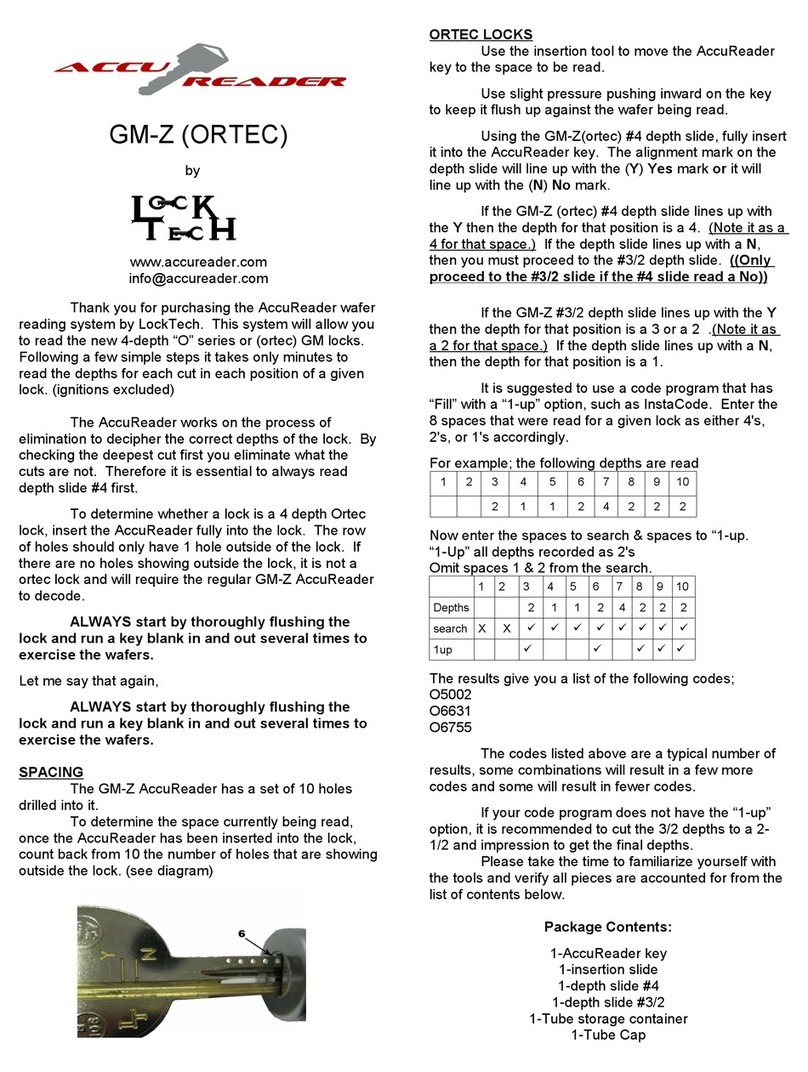
LockTech
LockTech AccuReader GM-Z ORTEC instructions
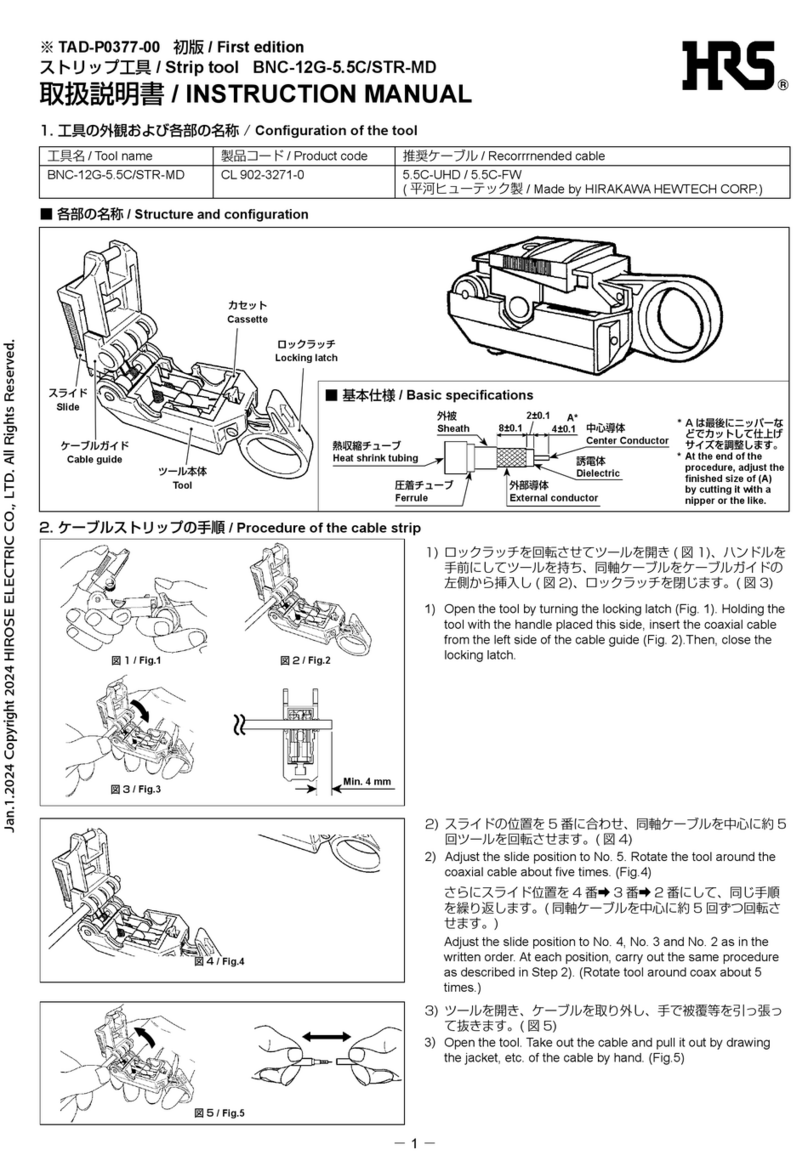
HRS
HRS BNC-12G-5.5C/STR-MD instruction manual
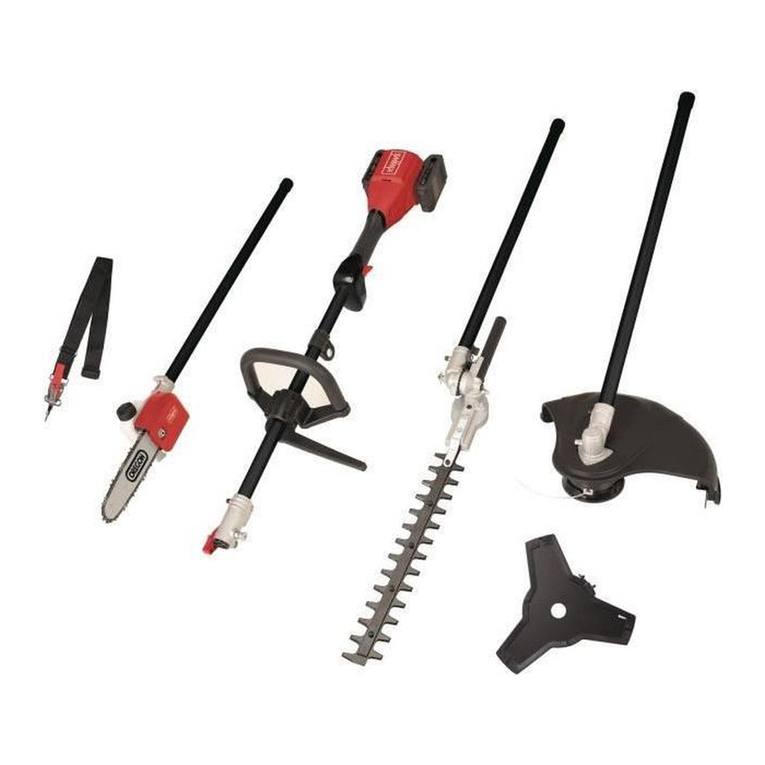
Scheppach
Scheppach MFB4-40Li SE Translation from the original instruction manual
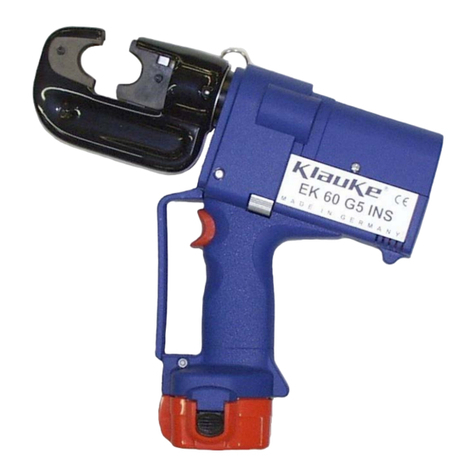
Klauke TEXTRON
Klauke TEXTRON EK60/G5INS instruction manual

Jobsite
Jobsite CT2836 Original instruction
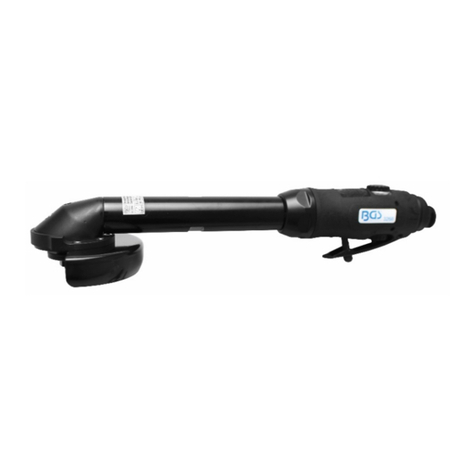
BGS technic
BGS technic 3268 quick start guide
